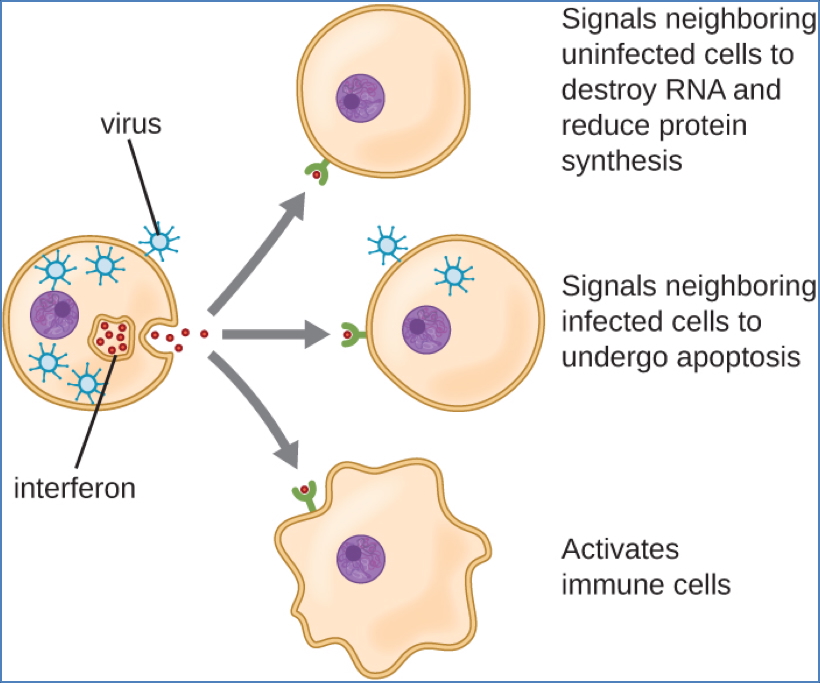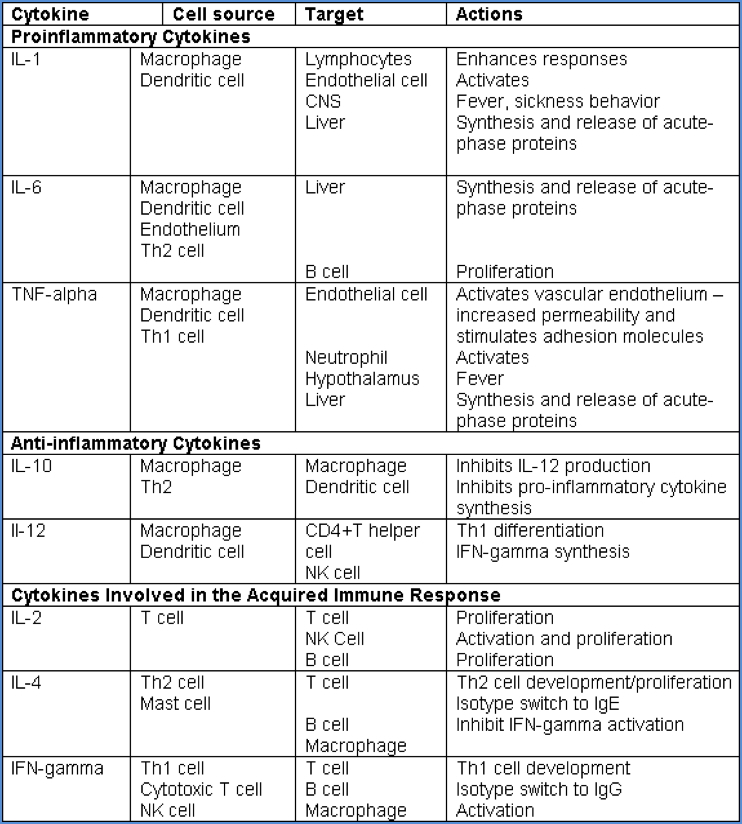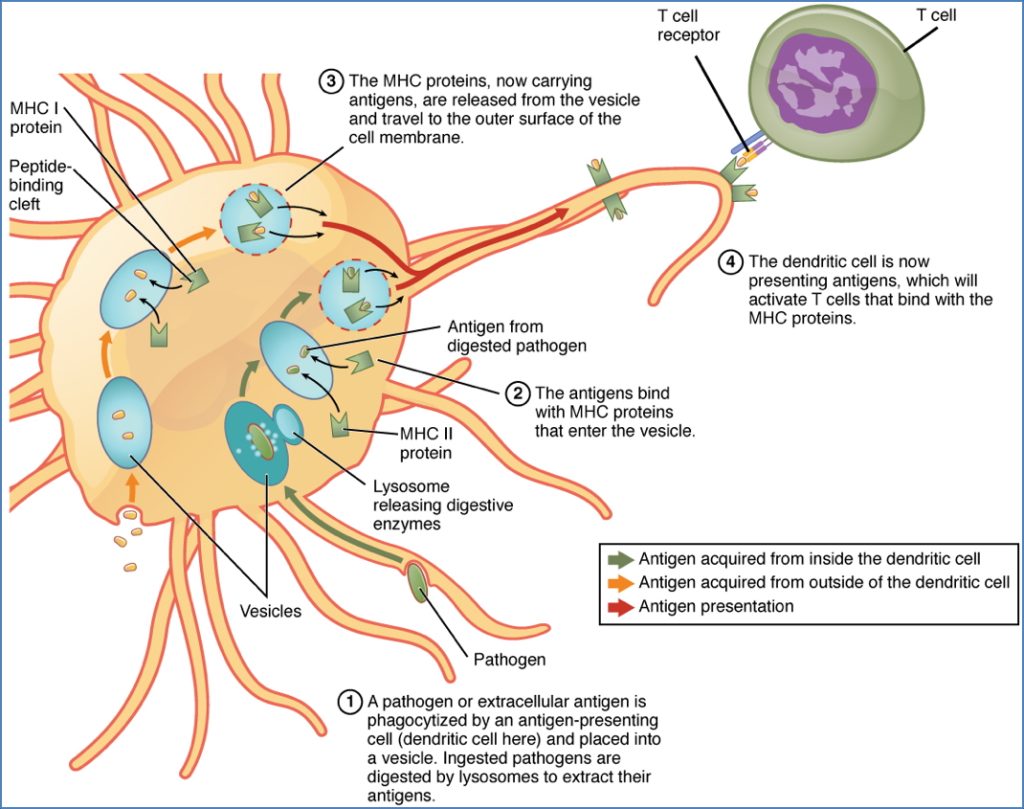Table of Contents
Overview – Innate–Adaptive Link
The innate–adaptive link describes how the innate immune system communicates with and activates the adaptive immune system. This bridge is formed by cytokines and antigen-presenting cells, which work together to convert early, non-specific responses into a long-lasting, highly specific immune defence. Understanding this link is essential in immunology, vaccine development, and clinical infection control.
Definition
- The innate–adaptive link refers to the mechanisms that connect the innate immune response (rapid, non-specific) with the adaptive immune response (delayed, specific, memory-forming).
- Key components:
- Cytokines: Chemical messengers that activate, regulate, and recruit immune cells
- Antigen-Presenting Cells (APCs): Cells that process and display antigens to T-cells via major histocompatibility complexes (MHCs)
Cytokines
Overview
- Cytokines = Small proteins secreted by immune and non-immune cells that alter the behaviour of other cells
- Triggered by toll-like receptor (TLR) activation during innate immune responses
- Regulate:
- Inflammation
- Chemotaxis
- Cell proliferation, maturation, and apoptosis
Classification
- Interleukins (ILs):
- Originally thought to act only between white blood cells
- Now known to be produced by T-helper cells, macrophages, endothelial cells
- Control development of T, B, and haematopoietic cells
- Chemokines:
- Direct cell migration via chemotaxis
- Create concentration gradients for immune cell recruitment
- Lymphokines:
- Secreted by lymphocytes (mainly T-cells)
- Attract and activate other immune cells at the site of infection
Modes of Action
- Autocrine: Acts on the cell that secretes it (e.g. chemokines)
- Paracrine: Acts on nearby cells (common in immune responses)
- Endocrine: Travels systemically to distant sites (e.g. acute-phase cytokines like IL-6)

Key Cytokines
- IL-1, IL-6, TNF-α:
- Stimulate acute-phase protein production by the liver
- Act as pyrogens → induce fever
- Mobilise neutrophils from bone marrow
- Stimulate dendritic cell activation and migration to lymph nodes
- IL-8:
- A chemokine produced by monocytes, macrophages, and damaged epithelium
- Recruits granulocytes, monocytes, and CD8+ T-cells to the infection site
- Interferon gamma (IFN-γ):
- Activates macrophages
- Secreted by CD4+ T-helper cells, CD8+ cytotoxic T-cells, and natural killer (NK) cells


Antigen-Presenting Cells (APCs)
- APCs bridge innate sensing and adaptive response by displaying processed antigens to T-cells on MHC molecules
Dendritic Cells
- Most efficient APCs
- Recognise pathogens via pattern recognition receptors (e.g. TLRs)
- Migrate to lymph nodes after antigen uptake
- Present antigen on both MHC-I and MHC-II, enabling activation of:
- CD4+ helper T-cells
- CD8+ cytotoxic T-cells
Macrophages
- Recognise pathogens via TLRs
- Present antigen on MHC-II to CD4+ helper T-cells
- Require helper T-cell activation to become fully phagocytic
- Also secrete cytokines to initiate inflammation
B-Lymphocytes
- Use surface immunoglobulin receptors to bind specific antigens
- Present internalised antigens on MHC-II
- Require CD4+ T-helper cell interaction to:
- Differentiate into plasma cells
- Undergo isotype switching
- Produce high-affinity antibodies

Summary – Innate–Adaptive Link
The innate–adaptive link is mediated primarily by cytokines and antigen-presenting cells, ensuring that the body’s initial broad-spectrum immune defence transitions into a highly specific adaptive response. Cytokines such as IL-1, IL-6, TNF-α, and IFN-γ orchestrate immune cell recruitment and activation, while dendritic cells, macrophages, and B-lymphocytes process and present antigens to initiate T-cell responses. For a broader context, see our Immune & Rheumatology Overview page.